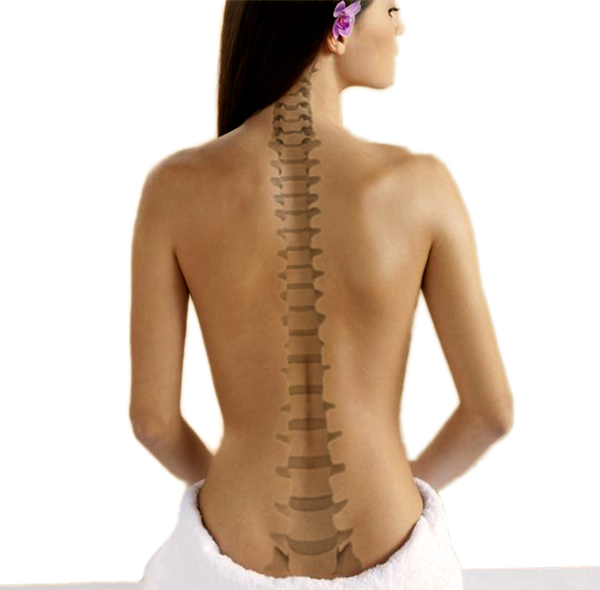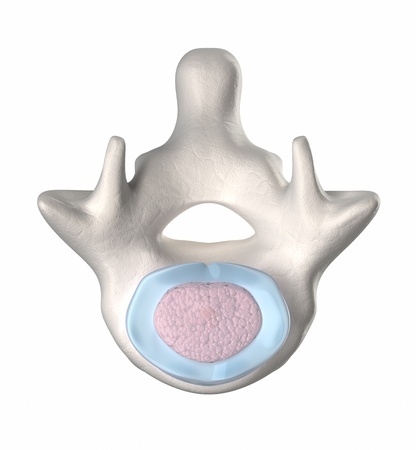
Spine Overview
Anatomy of the spine
The spine, or backbone, forms the axis of the human body. It supports and connects the head, chest, arms, legs and pelvis. The segmental construction of its 24 vertebral bodies gives us flexibility. A healthy spine allows rotational movements as well as bending sideways, forwards and backwards. Three flexible curves or arcs give it its typical S-shaped curve. It is an ingenious unit of stability and mobility and a complex structure that gives us our dynamic balance as the earth’s most evolved species.
A vertebra consists of a compact, but structurally very elastic vertebral body and a posterior vertebral arch, with two lateral transverse processes and the rearward pointing spinous process. Between the vertebral arch and the vertebral body is the spinal canal, containing the spinal cord. There is a differentiation between the anterior column, in which the vertebrae – strung together like a chain – are connected by the intervertebral discs (except between the 1st and 2nd cervical vertebrae), and the posterior column, where the vertebrae are connected the facet joints. The facet joints are located in pairs between the transverse processes and the vertebral body. Their articular surfaces are covered by a cartilaginous layer. The facet joints are embedded in a joint capsule, criss-crossed by blood and nerve tissue.

Anatomy of the intervertebral disc
The 23 intervertebral discs, which along with the vertebral bodies act as shock-absorbers, are found between the segmentally arranged vertebrae, from the second cervical vertebra down to the sacrum. The intervertebral disc consists of an outer fibrous ring (annulus fibrosus) and a central gelatinous core (nucleus pulposus). The fibrocartilaginous outer zone of the fiber ring radiates into the end plates of the vertebral bodies. Central and peripheral layers of the fiber ring are anchored in the vertebral ligaments. This elaborate and elastic connecting unit of ligaments, intervertebral discs and vertebral bodies forms the anterior column of the spine. The gelatinous core (nucleus pulposus) is embedded inside the fiber ring. It consists of 80-85% water and can alter its inner tension by absorbing fluid. Under short-term strain, the disc, similar to a hydraulic press, takes on the function of an elastic, hydrostatic system.
Source reference:
(1) Schünke, Schulte, Schumacher (2005) Prometheus, Rumpfwand, 1. Knochen, Bänder und Gelenke, Thieme Verlag
(2) Bertagnoli, Yue, McAfee, An (2011) Einführung in die bewegungserhaltende Chirurgie der Wirbelsäule
